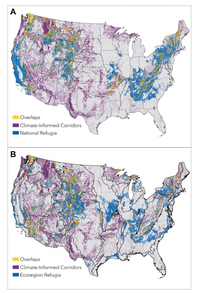
Targeting current species ranges and carbon stocks fails to conserve biodiversity in a changing climate: opportunities to support climate adaptation under 30x30
Protecting areas for climate adaptation will be essential to ensuring greater opportunity for species conservation well into the future. However, many proposals for protected areas expansion focus on our understanding of current spatial patterns, …
Identifying key federal, state, and private lands strategies for achieving 30x30 in the United States
Achieving ambitious goals to conserve at least 30% of U.S. lands and waters by 2030 will require a multiscale baseline understanding of current protections, key decisionmakers, and policy tools for moving forward. To help conservationists and …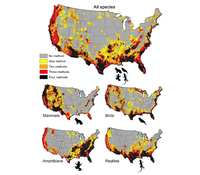
Options for prioritizing sites for biodiversity conservation with implications for '30 by 30'
International and national initiatives aim to conserve at least 30% of lands and waters by 2030. To safeguard biodiversity, conservation actions must be distributed in places that represent ecosystem and species diversity. Various methods of …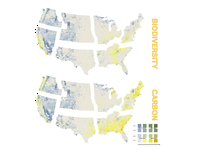
A definition of “protect” or “conserve” under 30x30
A clear and consistent definition of “protected” or “conserved” is needed to establish priority values and required mechanisms for implementation of 30x30 for addressing the biodiversity and climate crises. The definition must be functional, such …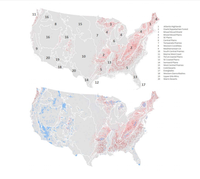
Degradation of visible autumn icons and conservation opportunities: trends in deciduous forest loss in the contiguous US
Temperate deciduous forests are one of the most visible biomes on Earth because of their autumn aesthetics and because they harbor some of the most heavily populated regions, including in the United States. Their location and their ability to attract …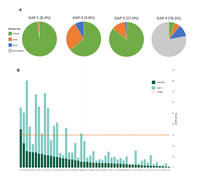
Identifying key federal, state, and private lands strategies for achieving 30x30 in the US
Addressing the current biodiversity crisis will require transformative changes to social, political, and economic structures. One science-based recommendation is protecting 30% of the Earth's terrestrial and marine systems by 2030, 30x30. Here we …